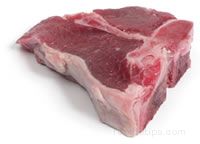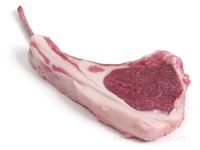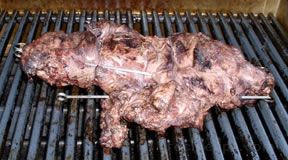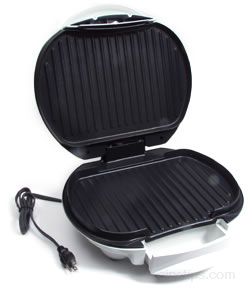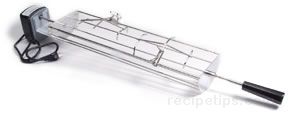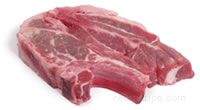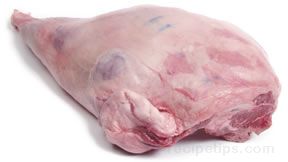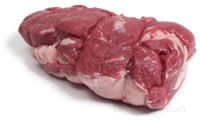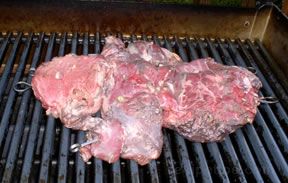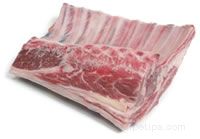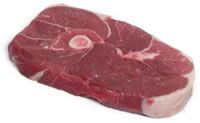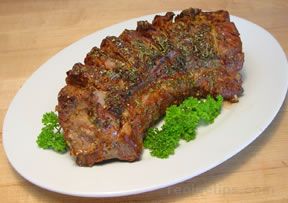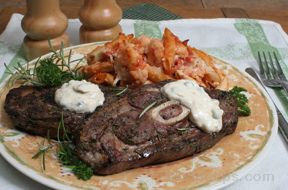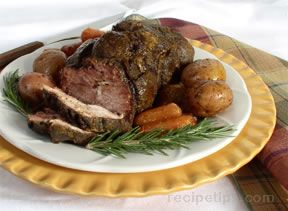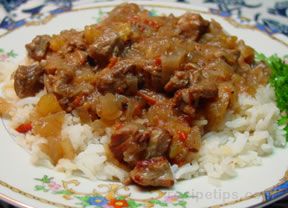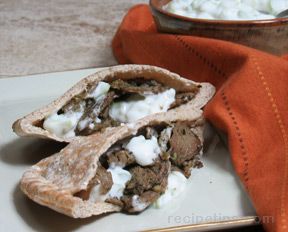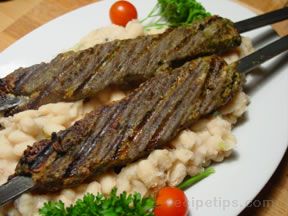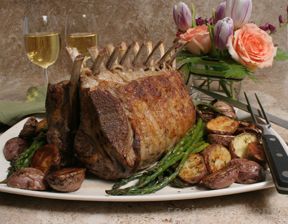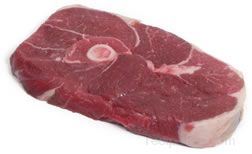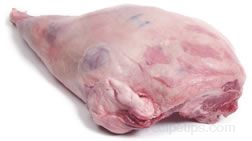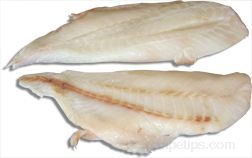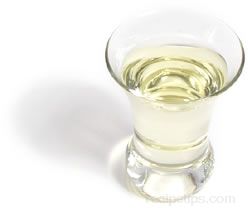Contamination Prevention | Doneness | Proper Storage | Safety and Handling Tips
|
Make sure that lamb is among the last items selected when shopping, so that it is without refrigeration for as short of time as possible. The growth of harmful bacteria on the meat will be accelerated if it is not properly refrigerated. If the meat is without refrigeration for more than an hour, because of the travel time from the market, a cooler with ice should be used to transport the meat, and any other perishable items, for the duration of the travel time. Cleanliness It is important to follow the basic rules of cleanliness when preparing lamb. Work surfaces, dishes, and utensils should be washed thoroughly with soap and hot water after using them. Bleach can be used as a disinfectant for cutting boards and other work surfaces or an antibacterial spray may be used. When taste testing food, do not use the same utensil that was used for preparation and be sure that a clean spoon or fork is used for each taste to eliminate the spread of germs. Beware of kitchen washcloths and towels that have been used on multiple surfaces because they can spread germs. Use paper towels or other disposable cloths whenever possible. Cross Contamination Many food items should be kept separate from each other during storage and preparation to prevent cross contamination. Never store ready to eat foods next to raw lamb or any other raw meat. Bacteria that may be present on the raw meat may contaminate the ready to eat foods. During food preparation, it is very important to wash your hands often to help prevent the transfer of harmful bacteria from one food item to the next. For example, when handling raw meat, you should wash your hands thoroughly before chopping vegetables to reduce the risk of transferring bacteria from the meat to the vegetables. If cutting boards are used in your kitchen, it is a good idea to use one for meats and a different one for fruits and vegetables. Cutting surfaces made from tempered glass are safer to use because you don't have to worry about cracks and pores harboring bacteria as you do with wood or plastic surfaces. Tempered glass surfaces are also easy to clean. Regardless of the material they are made from, cutting surfaces should be cleaned thoroughly after each use. The knife that was used to cut raw lamb should not be used to chop vegetables unless the knife has been washed thoroughly first. When serving cooked meat, do not place it on the plate that contained the raw meat. |
|
Bacteria, such as E. coli, may be present on any cut of lamb, but it is most common on ground lamb because the grinding process may distribute the bacteria throughout the meat. Ground lamb must be cooked until the internal temperature reaches a minimum of 160°F to ensure that dangerous bacteria are destroyed. |
|
Refrigerator / Freezer Most cuts of lamb can be safely stored in the refrigerator at temperatures between 33°F and 40°F for 2 or 3 days. They can be stored in a freezer with a temperature of 0°F or less for 6 to 9 months. Refrigerated ground lamb should be used within 1 or 2 days and can be stored in the freezer for up to 4 months. Leftover cooked lamb that is refrigerated should be used within 3 or 4 days and can be frozen for up to 3 months. Lamb should be stored in the coldest part of the refrigerator until it is ready to use. Lamb that will not be used within a few days should be stored in the freezer. If the lamb will be frozen for only 1 or 2 weeks, it can be stored in its original packaging, however if it requires long-term freezer storage, it should be rewrapped with heavy-duty protection to prevent freezer burn. Freezer Burn Freezer burn causes lamb to become discolored and dehydrated. This is because exposure to the cold, dry air of the freezer compartment can cause moisture loss, especially if the lamb is packaged incorrectly and/or stored in the freezer for an excessive length of time. A layer of plastic wrap followed by a layer of heavy-duty aluminum foil works well as protection against freezer burn. Heavy white freezer paper is another alternative for protecting the meat. It is important to note that freezing lamb may affect its flavor, texture, and appearance when it is finally thawed and cooked, and in some cases, there may be a noticeable difference between fresh and frozen. Vacuum Packaging A storage method that works well for fresh or frozen lamb is vacuum packaging. It helps to keep lamb fresh for longer periods if properly refrigerated or frozen. The vacuum packaged is usually made from plastic bags. The cut of lamb is placed inside the bag, the air is removed creating a vacuum in the bag, and then the bag is sealed to maintain the vacuum. Lamb that is frozen for long-term storage in vacuum packages (or other types of packaging) can be dated so that it can be used within the proper time limit: up to 9 months for raw lamb cuts, 4 months for ground lamb, and 3 months for any type of cooked leftovers. |
|
Lamb Safety and Handling Tips
Ground Lamb Safety and Handling Tips When a cut of meat is ground, the entire cut is exposed to the air and the grinding equipment. It is also blended with the bacteria that may have been on the surface of the meat before grinding. This makes it extremely important to cook the ground meat thoroughly to kill all of the bacteria that may be present. An interior temperature of at least 160°F is required to make ground lamb safe to eat. Other ground lamb safety tips to consider are:
|

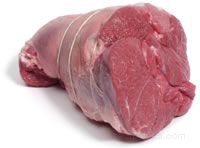




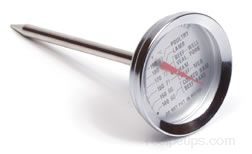 Traditional guidelines state that lamb cooked very rare, rare, or medium rare should have an internal temperature ranging between 115ºF to 140°F. With increased concern over bacteria that may be present in the internal portions of meat, it is now recommended that whole lamb cuts be cooked to an internal temperature of not less than 140°F, even though bacteria is usually only on the surface of the meat. (An increase in the temperature of at least 5ºF will occur during the resting period, reaching 145ºF, which is considered the minimum safe internal temperature.) Traditionally, cooking lamb to 140ºF was considered medium doneness, but updated guidelines would place it in the medium-rare category. Regardless of the category the doneness is referred to, lamb cooked to this temperature is still pink in the center, juicy, and tender, but considered much safer than cooking it to a lesser degree of doneness. Searing lamb on the stovetop before roasting is also a good method of killing surface bacteria as well as creating a flavorful browned crust.
Traditional guidelines state that lamb cooked very rare, rare, or medium rare should have an internal temperature ranging between 115ºF to 140°F. With increased concern over bacteria that may be present in the internal portions of meat, it is now recommended that whole lamb cuts be cooked to an internal temperature of not less than 140°F, even though bacteria is usually only on the surface of the meat. (An increase in the temperature of at least 5ºF will occur during the resting period, reaching 145ºF, which is considered the minimum safe internal temperature.) Traditionally, cooking lamb to 140ºF was considered medium doneness, but updated guidelines would place it in the medium-rare category. Regardless of the category the doneness is referred to, lamb cooked to this temperature is still pink in the center, juicy, and tender, but considered much safer than cooking it to a lesser degree of doneness. Searing lamb on the stovetop before roasting is also a good method of killing surface bacteria as well as creating a flavorful browned crust.